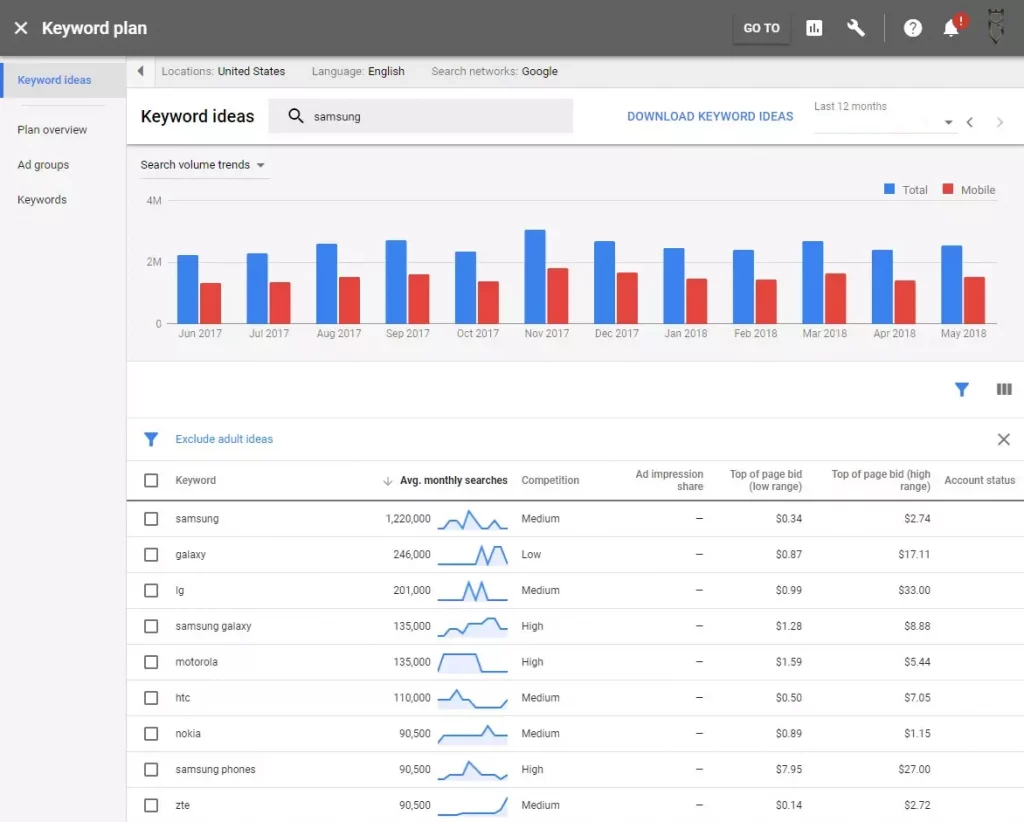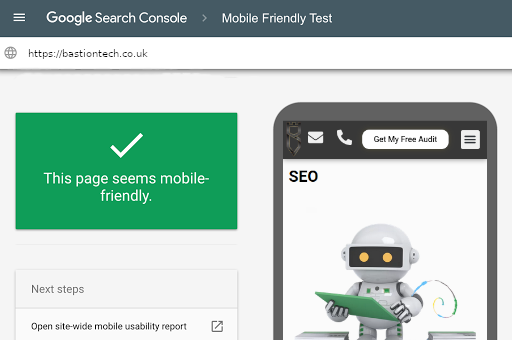In the ever-evolving landscape of digital marketing, adapting to the mobile-centric world is no longer an option—it’s a necessity. Now google has shifted to focus on mobile first indexing you can’t afford to be left behind.
With the majority of internet activity coming from mobile traffic, optimising your website for mobile search engines is crucial. To help you navigate this dynamic terrain effectively, we’ve compiled a detailed guide to five essential mobile SEO strategies that can significantly boost your website’s visibility and ranking in mobile search results.
In this blog post, we’ll delve into the core principles of mobile SEO, exploring strategies that go beyond mere responsiveness. We’ll cover everything from keyword research tailored to mobile users’ intent to the technical intricacies of mobile page speed optimisation.
Whether you’re a seasoned digital marketer or just starting on your SEO journey, this guide will equip you with the insights and techniques needed to excel in mobile SEO. By implementing these strategies, you’ll not only stay ahead of the competition but also ensure that your website thrives in an increasingly mobile-driven online landscape.
Mobile Keyword Research
To succeed in mobile SEO, it’s essential to grasp the distinct search behaviour of mobile users.
They often seek quick answers, immediate solutions, or location-based information. Here’s how to execute this strategy effectively:
- Utilize Mobile-Centric Keyword Research Tools: Specialised keyword research tools can be invaluable. For instance, Google’s Keyword Planner provides insights into mobile search volumes and trends. SEMrush and Ahrefs offer mobile-specific keyword data as well. These tools can help you discover keywords with a strong mobile presence.
- Voice Search Optimization: With the rise of voice-activated assistants like Siri and Google Assistant, optimising for voice search is crucial for mobile SEO. Incorporate conversational, long-tail keywords that mimic natural speech patterns. For example, instead of targeting “best Italian restaurants,” consider “What are the best Italian restaurants near me?”

- Competitor Analysis: Examine the mobile websites of your competitors. Tools like SEMrush, SpyFu, or Moz can help you identify keywords they are ranking for in mobile search results. By understanding your competition’s mobile strategy, you can identify gaps and opportunities to improve your own mobile SEO efforts.
- User Intent Mapping: Beyond keywords, focus on understanding the intent behind mobile searches. What problem are users trying to solve? What information are they seeking? By mapping user intent, you can create content that directly addresses mobile users’ needs.
For instance, if you have a local business like a pizza restaurant, consider optimising for keywords like “best pizza delivery near me” or “open pizza places now.” Crafting content that caters to these specific mobile queries can greatly enhance your visibility in mobile search results.
Remember that mobile keyword research is an ongoing process as search trends and user behaviour can evolve rapidly, so regularly revisit and update your keyword strategy.
Mobile-Friendly Content Creation
Once you’ve identified mobile-specific keywords, it’s crucial to tailor your content for mobile users. This involves crafting content that is not only responsive but also engaging and informative:
1. Concise and Scannable Content
Mobile users often browse on-the-go, which means they have limited time and attention. To cater to this, focus on creating content that gets to the point quickly.
Use shorter paragraphs that are easy to read on smaller screens. Break up your content with clear headings and subheadings that provide a roadmap for readers.
This makes it effortless for mobile users to scan through your content and find the information they need swiftly.
2. Visual and Multimedia Integration
Mobile devices are multimedia-centric, so make effective use of visuals and multimedia elements in your content.
Ensure that images and videos are optimised for mobile viewing and load quickly. Infographics, charts, and interactive content can also be engaging on mobile.
However, keep in mind that these elements should enhance the user experience, not slow down your mobile page’s loading time.
3. Relevance and Value
Mobile users typically have specific queries or immediate needs when searching. Your content should directly address their questions or problems. Ensure that your content is concise and to the point while still delivering substantial value.
Offer solutions, answer questions, or provide valuable insights that align with the intent behind mobile searches. Mobile users are more likely to engage with content that meets their immediate needs.
By focusing on creating mobile-friendly content that is concise, visually appealing, and valuable, you not only improve the user experience but also increase the chances of mobile users staying on your site and converting into customers or subscribers.
Mobile User Experience (UX) Improvement
In the realm of mobile SEO, user experience reigns supreme. A well-crafted mobile UX not only enhances SEO but also leads to longer user sessions, increased engagement, and higher conversion rates. To get people on your site and staying there you need to have your core web vitals optimised.
Here’s how to elevate your mobile UX:
1. Responsive Design
The foundation of a seamless mobile user experience is a responsive website design. Your site should effortlessly adapt to various screen sizes and orientations, ensuring that users have a consistent and visually pleasing experience across all devices.
A responsive design eliminates the need for a separate mobile site, streamlining your SEO efforts.

2. Streamlined Navigation
Navigation is the backbone of user interaction on mobile devices. Implement user-friendly menus, buttons, and clickable elements that are easy to access and use on smaller screens.
Prioritise a simple and intuitive menu structure that allows users to navigate your site effortlessly, reducing bounce rates and encouraging exploration.
3. Minimal Intrusions
Avoid intrusive elements like pop-ups or interstitials that can disrupt the user’s journey. While these may be effective on desktop, they often hinder the mobile experience.
If necessary, use unobtrusive methods for collecting email addresses or providing information. A user-centric approach is more likely to retain mobile visitors and positively impact SEO.
4. Usability Testing
Conduct thorough usability testing on different mobile devices and screen sizes. This step is crucial for identifying and addressing UX issues that might not be immediately apparent.
Test navigation, load times, and the overall feel of your site. Gather feedback from users to understand their pain points and make data-driven improvements.
A smooth and intuitive mobile experience not only leads to improved rankings but also enhances user satisfaction, driving organic growth through positive word-of-mouth and returning visitors.
By focusing on these mobile UX enhancements, you can create a mobile-friendly environment that keeps users engaged and converts them into loyal customers.
Mobile Local SEO
Businesses with a physical presence, such as local stores, restaurants, or service providers, need to prioritise local SEO for mobile. This strategy focuses on optimising for local search queries and enhancing visibility in local search results. Here are the key steps to excel in mobile local SEO:

Claim and Optimise Your Google My Business Listing
Your Google My Business (GMB) listing is the cornerstone of local SEO. Ensure that you claim and verify your listing with accurate and up-to-date information. This includes your business name, address, phone number (NAP), business hours, website URL, and high-quality photos.
Optimising your GMB profile increases your chances of appearing in Google’s local pack and Google Maps results, both of which are commonly accessed on mobile devices.
Encourage and Manage Customer Reviews
Customer reviews play a pivotal role in local SEO and can significantly influence your local rankings. Encourage happy customers to leave reviews on your GMB listing.
Respond to all reviews, both positive and negative, in a professional and timely manner. Addressing feedback demonstrates your commitment to customer satisfaction and can improve your reputation in the eyes of potential mobile users.
Create Location-Specific Content
Develop content that caters to the interests and needs of your local audience. This could include blog posts, articles, or event listings that are relevant to your locality.
Use location-based keywords naturally within your content. For instance, if you’re a bakery in Cumbria, create content that highlights “Best Bakeries in Cumbria” or “Cumbria’s Favorite Cupcake Flavors.” This helps you rank for location-specific searches on mobile.
Ensure NAP Consistency Across Directories
Consistency is key in local SEO. Ensure that your business’s Name, Address, and Phone number (NAP) are consistent across all online directories, review sites, and social media profiles.
Inconsistencies can confuse search engines and users, potentially harming your local search visibility. Consider using citation management tools to monitor and maintain NAP consistency.
Mobile local SEO is vital because mobile users often seek nearby businesses while on the go. When a user searches for “coffee shop near me” or “plumber in [city],” search engines strive to provide the most relevant and accurate local results.
Mobile Site Speed Optimisation
Mobile users have high expectations when it comes to page loading times. A slow website can lead to frustrated users, high bounce rates, and a negative impact on your search engine rankings. To ensure your mobile site is lightning-fast, consider the following techniques:
Image and Media Compression
Images and other media files often contribute to slow loading times.
To strike a balance between visuAal quality and load speed, compress these files. Use image optimization tools and formats like WebP, which provide good image quality at smaller file sizes. Additionally, use responsive images that are appropriately sized for different devices and screen resolutions.

Efficient Hosting and CDNs
Choose a reliable hosting provider that offers fast server response times.
If your audience is global, consider using a Content Delivery Network (CDN) to distribute content across multiple servers worldwide. CDNs reduce latency and ensure content is delivered from the server nearest to the user, improving load times.
Browser Caching and Resource Loading
Implement browser caching to store frequently used assets, such as images and scripts, locally on the user’s device.
This allows returning visitors to load pages faster. Enable asynchronous loading of resources to prevent blocking the rendering of the page.
Critical resources should load first, ensuring that users can start interacting with your site while other elements continue to load in the background.
Prioritise Critical Rendering Paths
Prioritise loading essential content, such as text and core functionality, before secondary elements like social media widgets or non-essential scripts.
This ensures that users see meaningful content quickly, reducing bounce rates and improving user experience.
A fast mobile site isn’t just about SEO; it’s also about providing a superior user experience. Google and other search engines consider site speed as a ranking factor, so optimising your mobile site’s speed will positively impact your search engine rankings.
Moreover, a fast-loading site enhances user satisfaction, encourages longer sessions, and can lead to higher conversion rates. Invest in mobile site speed optimization to meet the expectations of today’s mobile users and stay competitive in the digital landscape.
